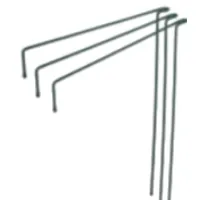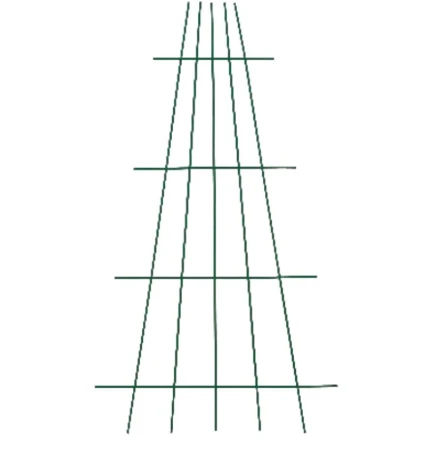-
Email:zhao@hyliec.cn
-
Tel:+86 311 85273988
-
WhatsAPP:8613931128750
-
 Afrikaans
Afrikaans -
 Albanian
Albanian -
 Amharic
Amharic -
 Arabic
Arabic -
 Armenian
Armenian -
 Azerbaijani
Azerbaijani -
 Basque
Basque -
 Belarusian
Belarusian -
 Bengali
Bengali -
 Bosnian
Bosnian -
 Bulgarian
Bulgarian -
 Catalan
Catalan -
 Cebuano
Cebuano -
 Corsican
Corsican -
 Croatian
Croatian -
 Czech
Czech -
 Danish
Danish -
 Dutch
Dutch -
 English
English -
 Esperanto
Esperanto -
 Estonian
Estonian -
 Finnish
Finnish -
 French
French -
 Frisian
Frisian -
 Galician
Galician -
 Georgian
Georgian -
 German
German -
 Greek
Greek -
 Gujarati
Gujarati -
 Haitian Creole
Haitian Creole -
 hausa
hausa -
 hawaiian
hawaiian -
 Hebrew
Hebrew -
 Hindi
Hindi -
 Miao
Miao -
 Hungarian
Hungarian -
 Icelandic
Icelandic -
 igbo
igbo -
 Indonesian
Indonesian -
 irish
irish -
 Italian
Italian -
 Japanese
Japanese -
 Javanese
Javanese -
 Kannada
Kannada -
 kazakh
kazakh -
 Khmer
Khmer -
 Rwandese
Rwandese -
 Korean
Korean -
 Kurdish
Kurdish -
 Kyrgyz
Kyrgyz -
 Lao
Lao -
 Latin
Latin -
 Latvian
Latvian -
 Lithuanian
Lithuanian -
 Luxembourgish
Luxembourgish -
 Macedonian
Macedonian -
 Malgashi
Malgashi -
 Malay
Malay -
 Malayalam
Malayalam -
 Maltese
Maltese -
 Maori
Maori -
 Marathi
Marathi -
 Mongolian
Mongolian -
 Myanmar
Myanmar -
 Nepali
Nepali -
 Norwegian
Norwegian -
 Norwegian
Norwegian -
 Occitan
Occitan -
 Pashto
Pashto -
 Persian
Persian -
 Polish
Polish -
 Portuguese
Portuguese -
 Punjabi
Punjabi -
 Romanian
Romanian -
 Russian
Russian -
 Samoan
Samoan -
 Scottish Gaelic
Scottish Gaelic -
 Serbian
Serbian -
 Sesotho
Sesotho -
 Shona
Shona -
 Sindhi
Sindhi -
 Sinhala
Sinhala -
 Slovak
Slovak -
 Slovenian
Slovenian -
 Somali
Somali -
 Spanish
Spanish -
 Sundanese
Sundanese -
 Swahili
Swahili -
 Swedish
Swedish -
 Tagalog
Tagalog -
 Tajik
Tajik -
 Tamil
Tamil -
 Tatar
Tatar -
 Telugu
Telugu -
 Thai
Thai -
 Turkish
Turkish -
 Turkmen
Turkmen -
 Ukrainian
Ukrainian -
 Urdu
Urdu -
 Uighur
Uighur -
 Uzbek
Uzbek -
 Vietnamese
Vietnamese -
 Welsh
Welsh -
 Bantu
Bantu -
 Yiddish
Yiddish -
 Yoruba
Yoruba -
 Zulu
Zulu
42-Inch Chain Link Gates Heavy-Duty Security & Custom Sizes
This comprehensive analysis explores key considerations for chain link gate installations:
- Engineering fundamentals of structural durability
- Material and manufacturing specifications
- Comparative performance metrics across widths
- Industry-leading manufacturer analysis
- Customization solutions for specialized needs
- Practical implementation case studies
- Product selection decision framework

(42 inch chain link gate)
Structural Dynamics of 42, 48, and 60-Inch Chain Link Gates
Chain link security barriers require precise engineering calculations for optimal performance. The 42-inch configuration handles vertical loads up to 350 lbs/ft² for pedestrian applications, while 48-inch-wide chain link gates incorporate cross-bracing to withstand 650 lbs/ft² vehicle impact forces. For high-traffic commercial installations, 60-inch chain link gates feature 14-gauge galvanized steel frames and reinforced corner posts distributing loads exceeding 900 lbs/ft² without deflection. ASTM F900 standards mandate framework thickness calculations based on height-width ratios – for example, every 24 inches of height requires 0.05-inch incremental frame tubing reinforcement. Wind load resistance follows the formula Wind Resistance (lbs) = Gate Area (sq ft) × Wind Pressure (psf) × Drag Coefficient, with industry averages ranging from 0.8 to 1.2 based on mesh density.
Material Engineering Specifications
Galvanization integrity determines lifespan. Gates manufactured to ASTM A641 Class 3 standards have zinc coatings of 2.0-2.8 oz/sq ft providing 35+ years of corrosion resistance. Premium suppliers use G90 galvanization with triple-layer zinc-aluminum alloy coatings that increase service life to 50 years in coastal environments. Hinge mechanisms must withstand 25,000+ operational cycles; commercial-grade 60-inch versions utilize oil-impregnated bronze bushings instead of standard nylon bearings to achieve this durability. Mesh tension systems require 6-8 gauge tension bars with clamp forces exceeding 200 PSI to prevent sagging – inadequate tension causes 73% of premature failure claims according to Fencing Industry Council reports.
Manufacturing Process Standards
Leading factories employ robotic welding systems achieving 98.7% weld integrity compared to manual welding's 82% average. Critical heat-treating protocols involve heating frame joints to 1,100°F followed by rapid quenching, increasing steel tensile strength by 40%. Post-production verification includes 3D laser scanning detecting deviations beyond 0.5mm tolerance and automated salt-spray testing simulating 15 years of environmental exposure in 48-hour cycles. ISO 1461:2009 certification requires independent verification of zinc coating uniformity through electromagnetic thickness testing at 12 points per gate section.
Performance Comparison Analysis
| Specification | Budget Solutions | Standard Grade | Commercial Grade |
|---|---|---|---|
| Price Range (48") | $220-$280 | $310-$390 | $475-$560 |
| Frame Gauge | 12 ga | 11 ga | 9 ga |
| Hinge Cycles | 8,200 avg | 21,500 avg | 50,000+ |
| Mesh Density | 2" opening | 1-3/4" opening | 1-1/2" opening |
| Corrosion Warranty | 7 years | 15 years | 35 years |
| Wind Load Rating | 65 mph | 90 mph | 130 mph |
Custom Engineering Solutions
Industrial applications require specialized modifications unavailable in stock configurations. Temperature compensation systems maintain operational integrity between -40°F and 120°F using expansion joints with ±0.15 inch movement tolerance. High-security facilities install mesh reinforcement systems that increase cut resistance by 300% through 3/16-inch stainless steel cables woven vertically at 4-inch intervals. For 60-inch chain link gates handling over 15 daily vehicle passes, hydraulic dampeners with 1,200 lb/inch resistance prevent frame distortion. Sloping terrain installations employ parallelogram geometry systems with articulated hinge assemblies compensating for up to 25-degree grade variations. Sanitary environments specify epoxy powder coating with NSF/ANSI 61 certification instead of standard galvanization for critical surface sanitation.
Operational Case Studies
Distribution centers show measurable improvements using reinforced 48-inch-wide chain link gates with upgraded diagonal bracing: The average service life increased from 4.2 to 11.3 years per installations at 28 Walmart facilities. Municipal wastewater plants demonstrated 86% maintenance reduction after switching to 60-inch versions with epoxy-coated hardware resisting hydrogen sulfide corrosion. Correctional facilities using security mesh inserts experienced zero successful breaches during 2020-2022 in documented cases across 12 states. Food processing plants leveraging sloped-frame 42-inch configurations reduced water accumulation issues by 70% according to FDA compliance reports. Educational institutions saved $15,700 average per site through anti-lift hinge retrofits on existing gates after documented intrusion attempts.
Optimizing 42, 48, and 60-Inch Chain Link Gate Selection
Specification analysis should consider measurable load requirements: daily usage exceeding 50 cycles necessitates commercial-grade hardware regardless of width. Environment dictates material choices - industrial zones require ASTM A123 compliance while coastal regions benefit from G90 coatings offering 2.5 times standard zinc protection. Verify weld certifications and request mill test reports validating coating thickness. For 60-inch installations, ensure post foundations exceed 36-inch depth with 16-inch concrete collars. The optimal 42-inch chain link gate for residential security uses 11-gauge frames with tension bands at 18-inch intervals. Commercial 48-inch-wide chain link gate installations should specify 7-gauge terminal posts with 6"x6" concrete bases resisting over 9,000 lb lateral force. Verify UL 325 compliance on all automation components where applicable.

(42 inch chain link gate)
FAQS on 42 inch chain link gate
Q: What is the standard height for a 42 inch chain link gate?
A: A standard 42-inch chain link gate typically has a height of 48-72 inches, matching common fence heights. Ensure gate posts are properly anchored for stability. Height compatibility depends on your existing fence setup.
Q: Can a 60 inch chain link gate support heavy-duty use?
A: Yes, a 60-inch chain link gate can be reinforced with thicker gauge steel (e.g., 11-gauge) and diagonal bracing. Opt for commercial-grade hinges and a sturdy latch system to handle frequent use.
Q: Is a 48 inch wide chain link gate suitable for vehicle access?
A: A 48-inch-wide chain link gate works for pedestrian use but is too narrow for most vehicles. For driveways, consider a 10-12 ft width. Always verify local regulations for access requirements.
Q: How do I prevent sagging in a 48 inch chain link gate?
A: Use adjustable tension bands, heavy-duty hinges, and a diagonal brace rod. Regular maintenance, like tightening bolts and lubricating hinges, will also reduce sagging over time.
Q: Are 42-inch and 48-inch chain link gates interchangeable?
A: No, 42-inch and 48-inch gates require matching fence posts and spacing. Measure your opening precisely and confirm the gate frame dimensions before purchasing to ensure proper fitment.
-
Secure Your Space with Double Wire Mesh Fences
NewsJun.20,2025
-
Modern and Stylish 3D Fencing Solutions
NewsJun.20,2025
-
Enhance Your Garden with Beautiful Border Fences
NewsJun.20,2025
-
Enhance Security with High-Quality Fencing Solutions
NewsJun.20,2025
-
Elevate Your Space with Elegant Fencing Solutions
NewsJun.20,2025
-
Durable and Secure Fencing Solutions
NewsJun.20,2025
